The Golden Gate Bridge is one of the world’s largest examples of the Art Deco style.
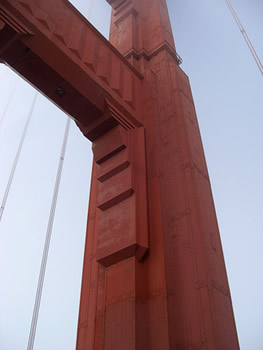
Named for the Exposition Internationale des Arts Décoratifs et Industriels Modernes, held in Paris in 1925, the Art Deco style was used by architect Irving Morrow to add aesthetic touches throughout the Bridge. These include chevron or beveled shapes and an expression of verticality.
More Images
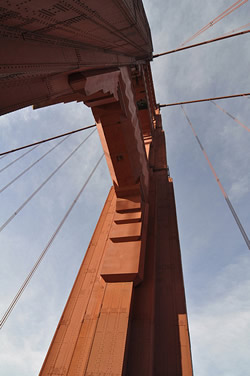 |
View looking up at the tower.
|
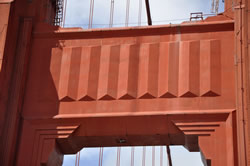 |
The chevron design and the angular, stepped brackets on the horizontal struts of the Bridge are nonstructural, added for visual effect.
|
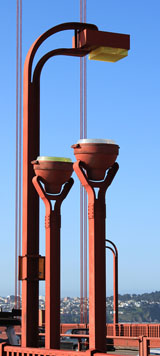 |
Lights that point down are street lights for Highway 101 traffic crossing the Bridge. The round lights pointing up emphasize the height of the towers at night, an up-lighting technique often used on Art Deco skyscrapers of the 1930s, such as the Empire State Building.
|
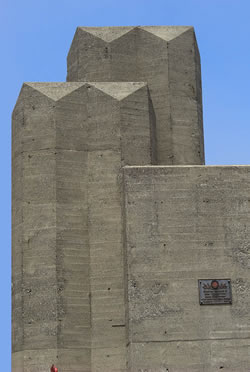 |
The concrete pylons at the ends of the arch portion of the Bridge have a chevron form in both plan and elevation. Their tops are another Art Deco feature: they do not meet the sky as a squared off shape like a flat roof but rather with staggered vertical forms.
|
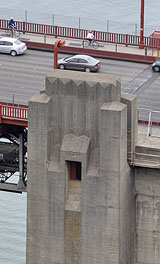 |
A hidden Art Deco gem at the Marin (north) side of the Bridge, viewed from Battery Spencer.
|
 |
The concrete at the base of the south tower also received an Art Deco treatment.
|
Explore this Topic Further
Architecture of the Golden Gate Bridge
Art Deco Style (grade 6 through adult)
This document from the Golden Gate Bridge research library describes the Art Deco style and also details the choice of first John Eberson and then Irving Morrow as architects for the bridge. These architects are responsible for the graceful Art Deco detailing of the bridge that makes it a world renowned landmark.
Biography: Irving Morrow from The American Experience (grade 3 through adult)
Before Irving Morrow joined the Golden Gate Bridge project, he was a San Francisco-based architect who designed houses. After he became the consulting architect on the bridge, Morrow was responsible for the international orange color and the beautiful Art Deco details such as the streetlamps, railings and vertical fluting on the towers that define the Golden Gate Bridge.
Golden Gate Bridge: History and Design of an Icon by Donald MacDonald and Ira Nadel, (Chronicle Books, 2008)
This book with its 70 hand-drawn illustrations provides an easy to understand account the design and construction of the bridge and the influences of Art Deco on its architecture. (Available as an eBook)